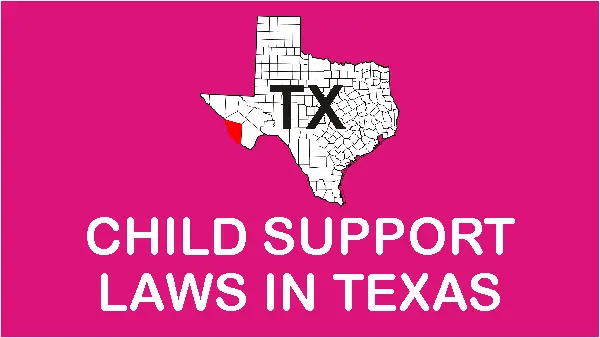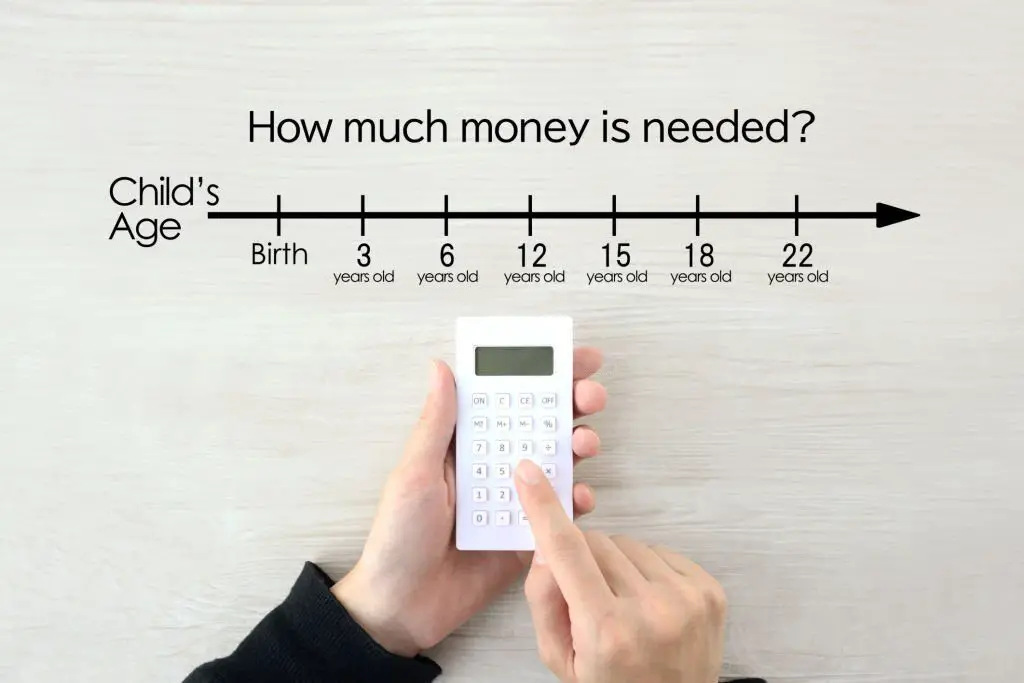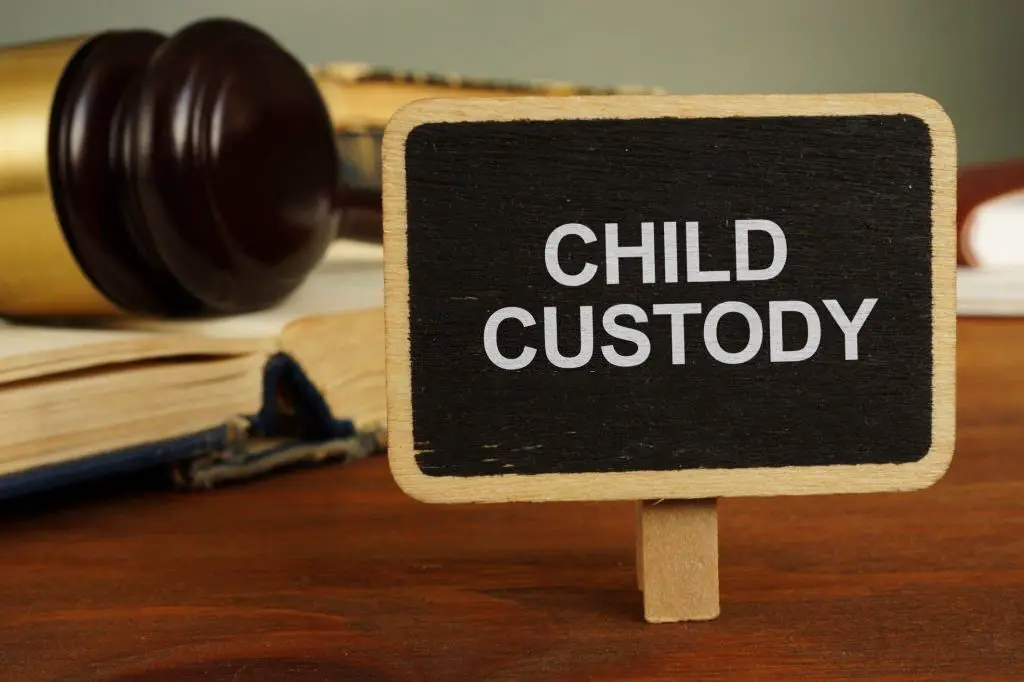
The laws governing child support in Texas are different from that of other states. TX child support law sets how much the child maintenance should be, and the duration of such payments, plus it seeks to guide parents in exceptional cases such as deviation, support for disabled children, and retroactive support.
As you may already know, child support (or child maintenance) is a continuous monetary payment made by a spouse to another spouse, guardian, caregiver, or the state for the upkeep of children after a divorce or separation.
The person who is required to pay child support is referred to as the “obligor,” whereas the person who is eligible to receive child maintenance is referred to as the “obligee.”
What are TX Child Support Laws?
The Texas child support laws are a set of rules and regulations that govern how child support is calculated, paid, and enforced in the state of Texas. The purpose of these laws is to ensure that children receive financial support from both parents, regardless of their living arrangements.
These laws provide a formula for determining the amount of child support based on the noncustodial parent’s net monthly income and the number of children they are responsible for supporting.
They also provide for the enforcement of child support payments, including wage garnishment, interception of tax refunds, and suspension of driver’s, professional, and recreational licenses.
Here is a general overview of the Texas child support laws:
- Determination of child support: In Texas, child support is calculated based on the noncustodial parent’s net monthly income and the number of children they are responsible for supporting. The Texas Child Support Guidelines provide a formula for determining the amount of child support.
- Payment of child support: Child support payments in texas are typically made monthly by the obligor. and are enforced by the Texas Attorney General’s Office Child Support Division.
- Modification of child support: Either parent may request a modification of the child support order if there has been a significant change in circumstances, such as a change in income or the needs of the child.
- Enforcement of child support: If a parent fails to pay child support, the Texas Attorney General’s Office Child Support Division has several enforcement options, including wage garnishment, interception of tax refunds, and suspension of driver’s, professional, and recreational licenses.
- Termination of child support: Child support in Texas typically terminates when the child reaches the age of 18 or graduates from high school, whichever occurs later. In some cases, child support may continue beyond the age of 18 if the child has a disability.
What does Child Support Cover in Texas?
In Texas, child support is intended to cover the basic needs of the child, including food, clothing, housing, transportation, and healthcare. The funds received through child support are used to provide for the child’s day-to-day expenses, as well as their educational and extracurricular needs.
Here is a general overview of what child support covers in Texas:
- Basic necessities: Child support is used to cover the basic necessities of life, such as food, clothing, and housing.
- Healthcare: Child support can be used to cover the cost of the child’s healthcare, including medical, dental, and vision expenses.
- Education: Child support can be used to cover the costs of the child’s education, such as school supplies, tuition, and extracurricular activities.
- Miscellaneous expenses: Child support can also be used to cover miscellaneous expenses, such as transportation, entertainment, and other needs specific to the child.
Child Support When One Parent Lives Outside Texas
To enforce child support orders beyond state boundaries, each state has to have the Uniform Interstate Family Support Act (UIFSA) in place. Texas is no exception.
The UIFSA ensures that child support processes and procedures are consistent across states. When one spouse lives in another state where the Texas courts do not have authority to adjudicate or enforce orders, UIFSA reduces these bottlenecks.
As a result of the UIFSA, a TX child support attorney can take legal action against a spouse who now lives in another state to enforce a child support order.
How is Child Maintenance Calculated In Texas?

Learn How Child Maintenance Calculated In Texas
To calculate child maintenance, Texas uses the TX Income Shares Model/Percentage of Income Model/Melson Formula. This can be done easily using the Texas Child Support Guidelines. Here is a general overview of the process for calculating child support in Texas:
- Determine net monthly income: The first step in calculating child support is to determine the noncustodial parent’s net monthly income. This includes all sources of income, such as salary, bonuses, and self-employment income, minus certain deductions, such as federal and state taxes and Social Security.
- Apply the Texas Child Support Guidelines: The Texas Child Support Guidelines provide a formula for determining the amount of child support based on the noncustodial parent’s net monthly income and the number of children they are responsible for supporting.
- Consider additional expenses: The Texas Child Support Guidelines allow for the inclusion of additional expenses, such as healthcare and education costs, which may be included in the child support calculation.
- Review and adjust as necessary: The court may review and adjust the child support calculation as necessary, taking into account any special circumstances or needs of the child.
Texas Child Support Calculator or Worksheet
While a child support calculator can be used to estimate child support, it is not a guarantee of the final amount of child maintenance that the judge will order. A child support worksheet is a form used by the TX courts (or negotiating spouses) to approximate the basic child support obligation of the parents.
Regardless of which approach you use, spouses can decide on a child support sum and amend the worksheet accordingly to ensure it accurately reflects their agreement. Both establish a presumption duty to pay child support.
The final decision on the amount of child support is made by the administrative law judge, administrator, or court.
How Texas Guidelines are Applied
The TX court will use child support guidelines, which are law-based and are sometimes known simply as “Guidelines. Guidelines establish a fundamental minimum amount of child maintenance, from which the court can differ after considering a variety of considerations.
The criteria are believed to be rational, and a decision of support that conforms to the guidelines is believed to be in the best interest of the child,” according to the guidelines.
The Texas Guidelines are based on Net Monthly Income. The court also will employ one of two methods after determining Net Monthly Income:
1. The first method applies if an obligor’s net monthly income is less than $7,500.00. The judge will consider the number of children in the household who are the subject of the petition in this case (note that a different calculation applies if an obligor has children in two different households).
2. The second method applies if an obligor’s net monthly income is more than $7,500.00.
Gross Income Included in Calculating Child Maintenance
For child support calculation purposes, gross income includes:
- all wages and salary, including commissions, military pay, tips, overtime, and bonuses
- self-employment income
- interest and dividends
- net rental income from property the parent owns
Even jobless parents are likely to have some sources of income, like:
- severance pay
- unemployment benefits
- retirement benefits
- veterans’ benefits
- disability benefits, or
- workers’ compensation awards.
A TX family court judge may also allocate an income value to parents who do not currently have income-earning employment (like a second house). If a jobless parent inherits assets that can be sold, for instance, the judge may include the property’s market value as a part of such parent’s income.
Where parents willfully go unemployed or underemployed in order to avoid paying child support, judges may infer (assign) income based on what they are supposed to be earning.
Net Income for TX Guidelines

How to determine Net Income for TX child support
Remove the following costs from the total gross income to get the parent’s net income for paying child support in Texas:
- Social Security taxes, or any mandated retirement plan contributions if the parent does not pay those taxes.
- Income taxes, both federal and state (based on the tax rate for a single person claiming one exemption)
- union dues
- The TX court has ruled the parent to pay the child’s health and dental insurance premiums, as well as additional medical bills.
Parents who have already paid child support for another kid or children (from a previous relationship) may be eligible for a refund.
Is Medical Health Insurance Part of Child Support in Texas?

Medical Health Insurance and Child Support in Texas
Yes, in addition to the amount of support determined by the guidelines in Texas, the parents will be responsible for the child’s health and dental insurance.
Whereas the noncustodial parent is presumed to provide coverage, this can readily be transferred to the other parent if it makes good sense.
For instance, suppose the custodial parent’s employer offers healthcare insurance for the dependent but the noncustodial parent does not.
Factors Texas Courts Consider Before Ordering Maintenance
The following factors must be considered by the court when determining whether Texas Family Code applies:
- The age of the child and needs; the parents’ ability to assist
- Financial resources available to the child
- For a set period of time, you have custody and access to a child.
- An increase or decrease in the obligee’s earnings or income due to the obligee’s property and assets
- Childcare expenses incurred by either parent in order to keep a job
- any other children under the care of either party
- Any other children under the care of either party
- What kind of alimony or spousal maintenance is being paid or received;
- Obligor or obligee receives an automobile, house, or other benefits from his or her employer or business entity.
- The parties or the child’s special education, health care, or other expenses
- The cost of traveling to obtain custody of and access to a child.
- Cash flow from any estate and assets, including real estate, personal property, and business property, can be positive or negative.
How to Challenge or Modify Child Support Order
In Texas, a child support order can be challenged or modified if there has been a substantial change in circumstances, such as a change in income, an increase in the cost of living, or a change in the needs of the child. Here is a general overview of the process for challenging or modifying a child support order in Texas:
- File a motion to modify: If you wish to challenge or modify a child support order, you must file a motion to modify with the court. This can be done by filing a written request or by appearing in court.
- Provide evidence of change in circumstances: When challenging or modifying a child support order, you must provide evidence of a substantial change in circumstances that affects the child support amount. This may include evidence of a change in income, an increase in the cost of living, or a change in the needs of the child.
- Attend a hearing: The court will schedule a hearing to consider your motion to modify. Both parties will have the opportunity to present evidence and argue their case.
- Await a decision: After the hearing, the court will issue a decision on your motion to modify. If the court grants your motion, the child support order will be adjusted accordingly.
Steps to Collect Child Support in Texas

Steps to Collect Child Support in Texas
Getting a child support order in place is only half the struggle in Texas. You’ll also have to collect the money itself. A noncustodial parent is responsible for paying the full amount of child maintenance per month as imposed by the court. Here are the steps for getting child support in TX
1. Open a Child Support Case
Complete a child support application with your local child support agency/office
2. Locate the Other Parent
To begin the child maintenance procedure in TX, the child support services (CSS) office will use the information provided by the applying parent, as well as information gathered from other sources, to try to locate the other parent.
3. Establish Parentage
It’s critical to establish a legitimate relationship with the child when the other parent has been located. The state will assist you in locating the sufficient means. Parents can choose to acknowledge their parentage voluntarily or organize a genetic screening.
4. Establish a Child Support Order
A Texas child support order specifies how much the other parent should pay and includes details such as the payment schedule and provisions for the child’s health insurance.
5. Set Up Payment
Deducting child maintenance from a parent’s paycheck and transferring the money to the other parent or guardian is the most typical method of payment. It’s a simple way to make and track child support payments.
6. Enforce the Support Order
Your TX child support services will enforce the child support order if the noncustodial parent does not pay the full amount or does not pay any. Exposing overdue child support payments to credit bureaus, intercepting income tax refunds, and Withholding child maintenance from unemployment or worker’s compensation benefits are examples of other enforcement measures.
7. Review the Order
Three years after the order is issued, either parent can request their local child support office to revise it. They can ask for a reassessment sooner than three years if a parent’s situation has changed significantly, such as loss of employment or imprisonment.
Texas Child Support Services Office, Number, and Login Portal
Office – Texas Attorney General’s Office, Child Support Division
2445 S Buckner Blvd # 140, Dallas, TX 75227, United States
Phone Number – +1 800-252-8014
Online Login Portal – https://www.texasattorneygeneral.gov/child-support
Retroactive Child Support and Arrears
In Texas, failing to pay child support can have serious consequences. Some of the most common consequences of not paying child support include:
- Wage garnishment: The state of Texas can garnish the wages of an individual who is behind on child support payments. This means that a portion of their income will be withheld and sent directly to the person or agency responsible for collecting the child support.
- Liens on property: The state of Texas can place a lien on an individual’s property, including their home or vehicle, if they are behind on child support payments. This means that the individual will be unable to sell or refinance the property until the child support debt is paid in full.
- Driver’s license suspension: An individual who is behind on child support payments may have their driver’s license suspended by the state of Texas. This means that they will be unable to legally drive a vehicle until the child support debt is paid in full.
- Passport denial: The U.S. Department of State can deny an individual’s passport application if they are behind on child support payments. This means that they will be unable to travel outside of the country until the child support debt is paid in full.
- Contempt of court: An individual who is behind on child support payments may be found in contempt of court. This means that they can be fined, sentenced to jail time, or both, for failing to comply with a court order to pay child support.
If payment is not coming, here is an outline of the steps to enforce retroactive child support payments in Texas:
- File a petition: The first step in enforcing retroactive child support payments is to file a petition with the court. This petition should include all relevant information about the case, including the dates of the missed payments and the total amount owed.
- Serve the other party: The next step is to serve the other party with a copy of the petition. This can be done through a variety of methods, including personal service, certified mail, or service by publication.
- Attend a hearing: After the petition has been served, a hearing will be scheduled. During this hearing, both parties will have the opportunity to present their case and provide evidence to support their position.
- Obtain a court order: If the court finds that the other party is indeed responsible for paying retroactive child support, it will issue an order requiring them to pay the owed amount.
- Enforce the court order: If the other party does not comply with the court order, the individual seeking enforcement can take various enforcement actions, including wage garnishment, liens on property, driver’s license suspension, or even contempt of court proceedings.
If you feel the arrears are being demanded wrongly, you can learn how to get child support arrears dismissed HERE.
How to Pay Child Maintenance in Texas
In Texas, parents can pay child maintenance in a variety of ways, as long as your order doesn’t state otherwise:
- by debit or credit card,
- mail,
- check
- bank transfer
- direct deposit
- income withholding, or
- auto-draft from a bank account.
How to Check your Child Support Payment History in TX

How to Check Child Support Payment History in TX
When there are disagreements between the parents and a need to confirm how much money is owed, child support payment records are extremely beneficial.
When Does Child Support End in Texas?
The Texas court “may order that one or both parents support a child until:
- the child is 18 years or finishes high school (whichever comes last),
- the child emancipates by getting married,
- the child’s disabilities are removed, or
- the child dies.
Nevertheless, if the judge determines that the child is disabled (physically or mentally), the child can receive support perpetually.

Understanding Custody Rights of a Child in Texas
How Does TX Child Support Work if one Parent Has no Job?
If one parent has no job in Texas, the court will still determine the amount of child support to be paid based on the non-custodial parent’s ability to pay. This may involve calculating their earning capacity based on factors such as education, work history, and the job market in their area.
If the non-custodial parent is unable to find employment, the court may impute income to them. This means that the court will assign an income to the non-custodial parent based on their earning potential, even if they are not currently employed.
In cases where the non-custodial parent is truly unable to pay, the court may adjust the amount of child support to a lower amount. However, the non-custodial parent will still be required to pay what they can, and they will be expected to make efforts to find employment and increase their income in the future.
If the non-custodial parent’s unemployment is a temporary situation, the court may also allow for a temporary reduction in child support. However, once the non-custodial parent becomes employed again, the child support obligation will likely be reinstated to the original amount.
Is Child Support Tax Deductible in Texas?
NO. In Texas, child support payments are neither taxable to the recipient nor tax-deductible by the payer as stated by the IRS. Don’t include child support payments when calculating your gross income to see whether you have to file a tax return.
However, either parent may be eligible for a dependency exemption per child. If the parents can’t agree on who receives the exemption, the judge will set out the terms in a court order.
Getting a Skilled Texas Child Support Attorney
If you are involved in a family law matter in Texas, you may have a lot more questions than answers at this moment. You are not alone; Correspondence with members has shown that using the services of specialized child support attorneys saves a lot of hassles and most importantly, ensures you come out as a winner for you and your kid.
If you need to fight your child maintenance cause in TX with confidence, then you’ll need attorneys that are both empathetic and strong.
Luckily, we have compiled a database of these expert child support lawyers and made them available for the convenience of our members. You can reach them at the click of a button for legal advice and representation on child maintenance.
Click Here to Get our Free Texas Alimony recommendation.
Texas Resource
- Texas Child Adoption Guidelines
- Texas Childcare Guidelines
- Texas Child Custody and Visitation Guidelines
- Texas Child Support Guidelines
- Texas Divorce Guidelines
- Texas Marital Property Guidelines
- Texas Spousal Support Guidelines
- How to Check Texas Child Support Payment History
- Texas Child Support Calculator
- Texas Grants and Assistance for Single Mothers
Child Support Laws in all 50 States
A - Alabama | Alaska | Arizona | Arkansas
C - California | Colorado | Connecticut
D-H - Delaware | Florida | Georgia | Hawaii
I - Idaho | Illinois | Indiana | Iowa
K-L - Kansas | Kentucky | Louisiana
M - Maine | Maryland | Massachusetts | Michigan | Minnesota | Mississippi | Missouri | Montana
N - Nebraska | Nevada | New Hampshire | New Jersey | New Mexico | New York | North Carolina | North Dakota
O - Ohio | Oklahoma | Oregon
P-S - Pennsylvania | Rhode Island | South Carolina | South Dakota
T-U - Tennessee | Texas | Utah
V-W - Vermont | Virginia | Washington DC | Washington State | West Virginia | Wisconsin | Wyoming





